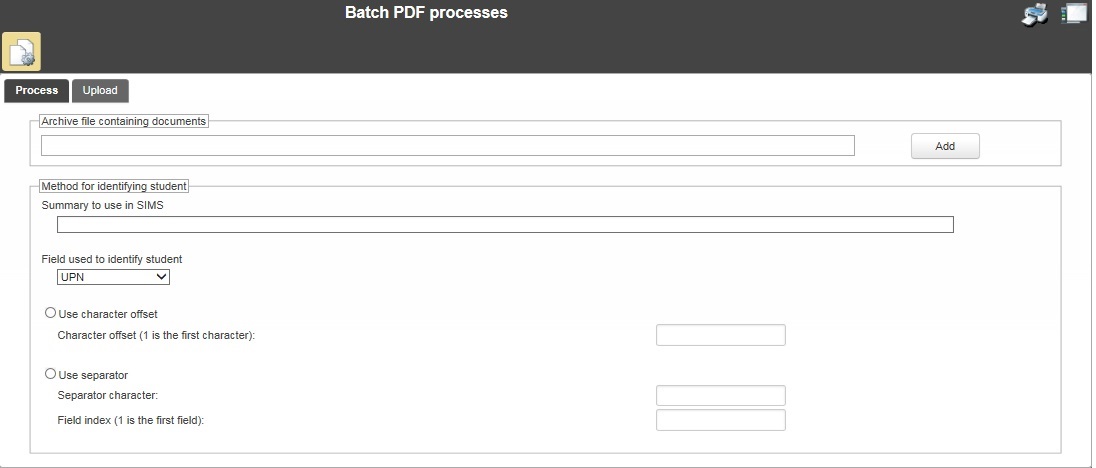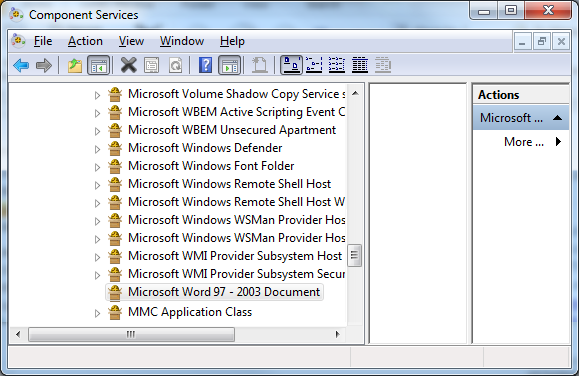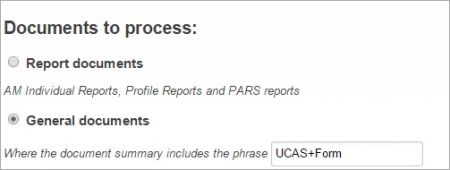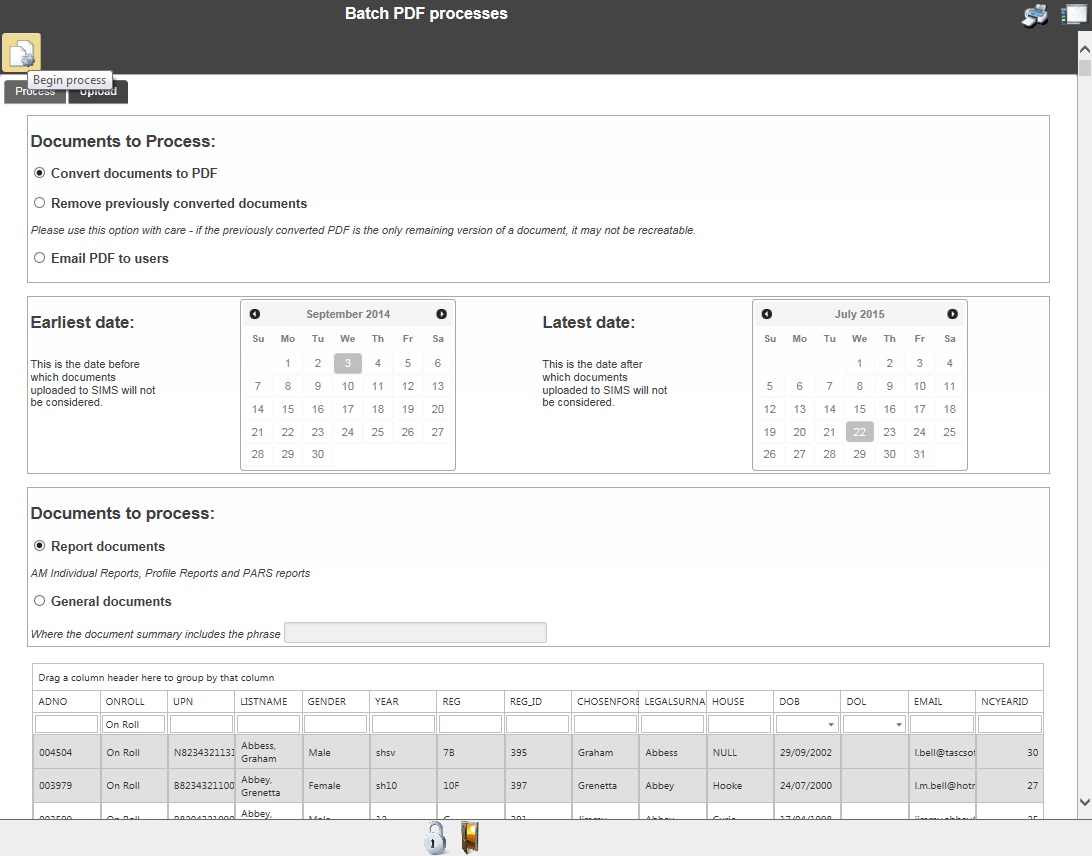Difference between revisions of "Batch PDF processes"
| Line 36: | Line 36: | ||
To convert existing Word documents to PDF format, select the "Convert documents to PDF" option from the top of the page. This process will convert documents from each pupil's linked documents. If you have previously converted documents to PDF format and now want to delete those PDF documents, select the "Remove previously converted documents" option instead. <br> <br> | To convert existing Word documents to PDF format, select the "Convert documents to PDF" option from the top of the page. This process will convert documents from each pupil's linked documents. If you have previously converted documents to PDF format and now want to delete those PDF documents, select the "Remove previously converted documents" option instead. <br> <br> | ||
| + | |||
| + | [[Image:gendocuments_keywords.jpg|450px]] | ||
If you already have PDF documents linked to pupils in SIMS then you can email these documents to the pupils' contacts by selecting the "Email PDF to users" option. <br> <br> | If you already have PDF documents linked to pupils in SIMS then you can email these documents to the pupils' contacts by selecting the "Email PDF to users" option. <br> <br> | ||
| Line 44: | Line 46: | ||
You can process either report documents (AM Individual Reports, Profile Reports, or [http://www.tascsoftware.co.uk/wiki/PARS_Connect/index.php?title=Customised_reports#Examples_of_Student_Reviews.3B_Bespoke_Grade.2FAssessment_Reports_designed_for_Schools PARS Student Reviews]) or General Documents. If you are processing general documents, then you need to include one or more keywords (if using more than one keyword, separate the words with a + symbol and no spaces) and Insight will only process the General Documents that contain all of the keywords you specify. <br> <br> | You can process either report documents (AM Individual Reports, Profile Reports, or [http://www.tascsoftware.co.uk/wiki/PARS_Connect/index.php?title=Customised_reports#Examples_of_Student_Reviews.3B_Bespoke_Grade.2FAssessment_Reports_designed_for_Schools PARS Student Reviews]) or General Documents. If you are processing general documents, then you need to include one or more keywords (if using more than one keyword, separate the words with a + symbol and no spaces) and Insight will only process the General Documents that contain all of the keywords you specify. <br> <br> | ||
| − | [[Image: | + | [[Image:BATCHPDF1.jpg]] <br> <br> |
Now you need to choose the pupils whose documents will be processed. If you are converting or removing, then the pupils you select will have their documents in SIMS either converted or removed. If you are emailing, then the documents will be emailed to all of the contacts in Insight for each of the pupils you select. <br> <br> | Now you need to choose the pupils whose documents will be processed. If you are converting or removing, then the pupils you select will have their documents in SIMS either converted or removed. If you are emailing, then the documents will be emailed to all of the contacts in Insight for each of the pupils you select. <br> <br> | ||
| Line 54: | Line 56: | ||
==Upload== | ==Upload== | ||
| − | If you would rather upload existing documents to the SIMS Document Server you should use then Upload tab. To perform the upload, you will need to have a ZIP file containing all the documents to upload (these can be any format, not just pdf). Each document needs to have either the pupil's UPN or Admission Number (ADNO) as part of the file name, to identify to pupil. <br> <br> | + | If you would rather upload existing documents to the SIMS Document Server you should use then Upload tab. |
| + | |||
| + | [[Image:BATCHPDF2.jpg]] | ||
| + | To perform the upload, you will need to have a ZIP file containing all the documents to upload (these can be any format, not just pdf). Each document needs to have either the pupil's UPN or Admission Number (ADNO) as part of the file name, to identify to pupil. <br> <br> | ||
On the Upload tab, click the Add button and select your zip file. Next enter the Summary that will be given to the file when it is uploaded to SIMS. From the dropdown, select either ADNO or UPN, depending on which appears in the names of the documents that you are going to upload. <br> <br> | On the Upload tab, click the Add button and select your zip file. Next enter the Summary that will be given to the file when it is uploaded to SIMS. From the dropdown, select either ADNO or UPN, depending on which appears in the names of the documents that you are going to upload. <br> <br> | ||
Revision as of 11:23, 10 April 2015
Insight has a batch pdf feature, which can be used to upload, convert or email documents. Conversion allows existing word documents in SIMS to be converted to a pdf format. The upload process can be used to upload several pdf documents to SIMS at once, from a folder. The email process is used to send copies of the pupils' reports to their parental contacts.
Contents
Configuration
For the batch processes to run the IIS server will need to have Microsoft Word installed and have two accounts created - one which has full access to run the batch processes (referred to as Account1) and another account used to authenticate users when they need to use the batch processes, but without giving them access to login to your server (referred to as Account2).
Account 1
On the IIS server create a local, machine administrator called "Account1" (you can actually call it what you like, it will continue to be referred to as Account1 here), and make sure it has log in to console rights. Domain admins and power users etc. will NOT be suitable. Make sure the password for Account1 never expires and can't be changed. If your Insight IIS server is also a domain controller you will not be able to create a local admin account, therefore you will not be able to use the batch PDF processes.
Next install Word 2010 or 2013, or alternatively Word 2007 with the save as PDF add-in which can be accessed here: 2007 Microsoft Office Add-in: Microsoft Save as PDF. If your operating system gives you a choice, you should always install the 32 bit version of Microsoft Word.
Log in as Account1 and run Microsoft Word. Enter initials where requested, agree to any licencing terms or activation processes, decide whether to post errors to Microsoft experience, activate over the web, etc. until you can just start Word and have it load up a blank document each time you run it, logged in as Account 1.
Next, click Start - Run and then either DCOMCNFG.EXE, or if you have a 64bit server, MMC comexp.msc /32. In the Component Services window, expand: Component Services > your server > DCOM Config. Look down the list for “Microsoft Word 97-2003 Document”, “Microsoft Office word 97-2003 Documents” or the APPID {00020906-0000-0000-C000-000000000046}.
Right click on the relevant node and select Properties, then the Identity tab. Now select “This user” and enter the Account1 details then click OK.
Those steps have created the environment needed for the batch PDF processes. When users run the Conversion process, they will be prompted to provide a username and password. Giving users the login details for Account 1 is undesirable, as they could potentially use these details to login to the IIS server. Instead, you should create a second limited account for users, so that the IIS server can authenticate them.
Account 2
On the IIS server create a local, machine administrator called "Account2" (you can actually call it what you like, it will continue to be referred to as Account2 here) and deny it log in to computer rights. This account can now be used when you come to run the conversion process, and by denying login you can give it to an administrative Insight user, without them being able to actually use it to log in to the server.
Preferences
Insight now needs to be given the account details of Account1. Log in to Insight and go to Manage > Preferences > Batch PDF conversion. Enter the username and password of Account1 then click the Update button at the top right.
Usage
To use the features of the batch PDF processes, go to Manage > Batch PDF processes. The options at the top of this page allow you to select the process that you want to use.
Convert, Remove and Email
To convert existing Word documents to PDF format, select the "Convert documents to PDF" option from the top of the page. This process will convert documents from each pupil's linked documents. If you have previously converted documents to PDF format and now want to delete those PDF documents, select the "Remove previously converted documents" option instead.
If you already have PDF documents linked to pupils in SIMS then you can email these documents to the pupils' contacts by selecting the "Email PDF to users" option.
Next you will need to enter a date range. Only documents that were uploaded to SIMS during this date range will be uploaded/removed/emailed.
Note: if you have Word documents in SIMS and you want to email them to parents, then you need to first convert the Word documents to PDF, then email the PDFs to parents. The date range for the Conversion process should cover the date where the Word documents were first uploaded to SIMS. The date range for the Email process would be the date where you converted the documents to PDF.
You can process either report documents (AM Individual Reports, Profile Reports, or PARS Student Reviews) or General Documents. If you are processing general documents, then you need to include one or more keywords (if using more than one keyword, separate the words with a + symbol and no spaces) and Insight will only process the General Documents that contain all of the keywords you specify.
Now you need to choose the pupils whose documents will be processed. If you are converting or removing, then the pupils you select will have their documents in SIMS either converted or removed. If you are emailing, then the documents will be emailed to all of the contacts in Insight for each of the pupils you select.
To select the pupils, first filter the list using the bars at the top of the table so that you can see only the pupils that you want to deal with. Then click on the pupil at the top of the list so their name is highlighted then scroll to the bottom of the list, hold down the shift button on your keyboard and click on the pupil at the bottom of the list. This should select all of the pupils in the list.
Finally scroll back to the top of the page and click the begin process button, which is at the top left and looks like two pages with a cog.
Upload
If you would rather upload existing documents to the SIMS Document Server you should use then Upload tab.
 To perform the upload, you will need to have a ZIP file containing all the documents to upload (these can be any format, not just pdf). Each document needs to have either the pupil's UPN or Admission Number (ADNO) as part of the file name, to identify to pupil.
To perform the upload, you will need to have a ZIP file containing all the documents to upload (these can be any format, not just pdf). Each document needs to have either the pupil's UPN or Admission Number (ADNO) as part of the file name, to identify to pupil.
On the Upload tab, click the Add button and select your zip file. Next enter the Summary that will be given to the file when it is uploaded to SIMS. From the dropdown, select either ADNO or UPN, depending on which appears in the names of the documents that you are going to upload.
You then need to select either Character Offset, or Separator, which tells Insight how to find the UPN or ADNO from the file names (see below). Once you have chosen either character offset or separator, click the begin process button, which is at the top left of the page and looks like two pages with a cog.
Character Offset
Use this option if the UPN or ADNO always appears in a certain place in the file names. For example, if your files are called Report001234.pdf, Report001235.pdf, Report001236.pdf, etc. then the ADNO always appears after the word "Report". The word report is 6 characters long, so in this case the ADNO always begins on the 7th character so you would use "7" as a character offset in this example.
Separator
If your file name looks more like Fred_Bloggs_001234.pdf then you can separate the file name into 'chunks' i.e. "Fred" "Bloggs" "001234". In this example, the chunks are separated by an underscore so the separator character should be _ (an underscore). The ADNO is in the third block, so the Field index should be 3.


